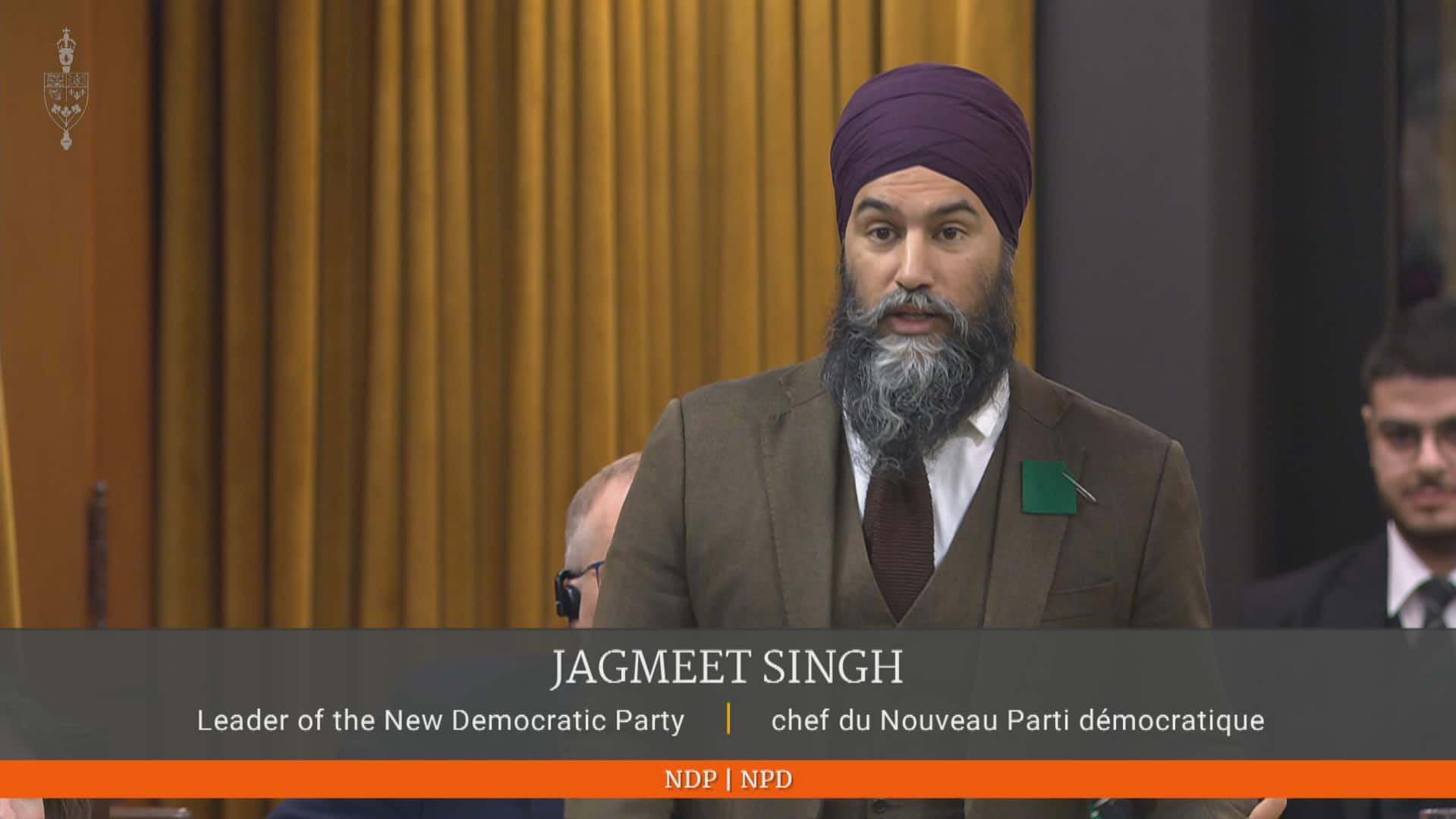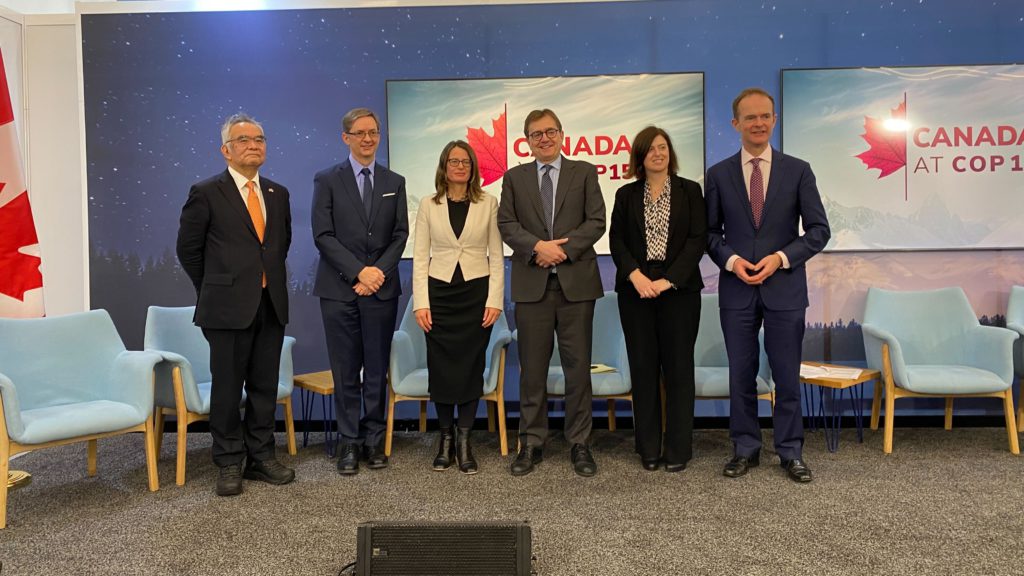CHA needs to be used more aggressively by the federal government, Singh says
Mark Gollom · CBC News · Posted: Feb 01, 2023
Federal NDP Leader Jagmeet Singh has been sounding the alarm about privatization creeping into the public health-care system.
Recently, Ontario Premier Doug Ford announced he wanted to give a greater role to privately run for-profit clinics. These facilities are clinics operated by the private sector that receive public funding from the Ontario Health Insurance Plan (OHIP) to perform medically necessary procedures.
But Singh says he's worried that trend of using public money to fund procedures in private clinics will take resources from the public system.
He said the federal government needs to utilize the Canada Health Act (CHA), which he said has significant powers to challenge for-profit privatized care.
"And it should be used more regularly and more aggressively to protect public health care," Singh said Monday, speaking to reporters on Parliament Hill.
But what exactly does the CHA do, how is it used and is it a tool that those who oppose health-care privatization can rely on to stop that trend? CBC News explains:
What is the Canada Health Act?
The Canada Health Act, enacted in 1984 after being passed unanimously in the House of Commons, laid out criteria to ensure "reasonable access to health services without financial or other barriers."
That meant Canadians would have access to medically necessary services without being directly charged for those services. All such services would be covered through the province or territories' health-care insurance plan, according to the act.
WATCH | Singh accuses Trudeau of health-care flip flop:

Singh accuses Trudeau of a 'flip flop' on health-care privatization in Ontario
Duration1:06
It also established a number of conditions related to health-care access that the provinces and territories had to fulfil in order to receive transfer payments from the federal government, known as the Canada Health Transfer (CHT). One of those conditions stipulated that patients couldn't be charged an extra fee for medically necessary services, also known as "extra-billing."
What restrictions are there on private health care?
Singh said he wants the government to use the CHA to challenge for-profit care. But there are no restrictions on private delivery inside public health-care systems, said Colleen Flood, director of the Centre for Health Law, Policy and Ethics and University Research Chair at the University of Ottawa.
"So what Ford has proposed, with private for-profit clinics, is perfectly fine under the Canada Health Act," she said.
The CHA does not forbid the provision of health services by private companies, as long as residents are not charged for insured services, according to the federal government website.
"In fact, many aspects of health care in Canada are delivered privately. Family physicians mostly bill the provincial or territorial health-care plan as private contractors. Hospitals are often incorporated private foundations, and many aspects of hospital care (e.g., lab services, housekeeping, and linens) are carried out privately," the website states.
"Lastly, in many provinces and territories, private facilities are contracted to provide services under the public health-care insurance plan."
It's the finance side of the CHA where restrictions are imposed that disallow patients to be charged out of pocket for medically necessary hospital and physician services, Flood said.
WATCH | Ford government unveils plan for reducing surgical wait-lists:
Ontario to expand surgeries available at for-profit clinics
16 days ago
Duration3:58
"What is medically necessary and how those rules are fixed are determined province by province."
No province or territory totally prevents a two-tier system — they just try to make it less appetizing for doctors, she said.
"Almost all provinces have this rule which says, 'look, if you want to bill the public system, then you have to only bill the public system. If you want to opt out, opt out.'"
Bacchus Barua, director of health policy studies at The Fraser Institute, said one problem with the CHA is that the conditions imposed are "remarkably vague," which create a risk-averse environment in terms of health-care policy.
"Because of that risk aversion, a lot of provinces actually go beyond what's explicitly required by the CHA so that they don't accidentally get hit by by the federal government's interpretation of it," he said.
"We don't see the sort of experimentation with policies that are proven elsewhere, to work in most other universal health-care systems."
What happens if a province or territory violates the Act?
As the CHA states, if hospitals and doctors charge fees for medically necessary services, then the federal government is supposed to deduct $1 from the province or territories' annual grant or CHT for every dollar assessed of the so-called extra billing.
Has the federal government gone after provinces for violations?
Prime Minister Justin Trudeau, responding to Singh's concerns about the enforcement of the CHA, said Monday that his government will continue to defend the Canada Health Act and can pull back money from provinces that violate it.
"In the past, this government has pulled back money from provinces that haven't respected it. We will continue to do that."

According to the 2020-2021 Canada Health Act Annual Report, for the most part, provincial and territorial health-care insurance plans met the requirements of the Canada Health Act. But there were some instances when the federal government said it had to withhold funds.
A deduction of $4,521 was taken from the March 2021 CHT payments to Newfoundland and Labrador for charges at a private ophthalmological clinic. Both New Brunswick and Ontario were dinged around $65,000 and nearly $14,000 respectively for charges at private abortion clinics.
The biggest violator, according to the report, was British Columbia, which submitted a financial statement of extra billing and user charges for fiscal year 2018–2019, in the amount of nearly $14 million. A deduction in the same amount was taken from British Columbia's March 2021 CHT payments. (The federal government has reimbursed the province in recognition for its Reimbursement Action Plan).
The province has been the centre of a legal battle waged by private health-care advocate Dr. Brian Day, the owner of the Cambie Surgery Centre in Vancouver, who argues that patients should have a right to pay for services if wait times in the public system are too long.
But Dr. Michael Rachlis, a public health physician and an adjunct professor at the University of Toronto Dalla Lana School of Public Health, says that for the most part the federal government has not gone after provinces or territories for contravening the ban on extra billing for medically necessary services.
"The way the act is enforced — it's not like there's federal inspectors," he said. "The provinces are asked to investigate themselves. There is no real enforcement mechanism."
Rachlis says he also believes that there are lots of private clinics across Canada charging for medicare-covered services or up-selling services, citing a Globe and Mail 2017 investigation and work done by the Ontario Health Coalition.
"And the feds aren't doing anything."










